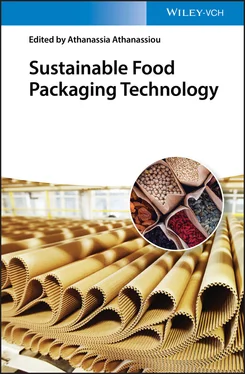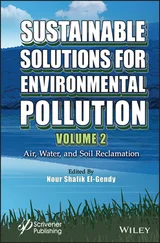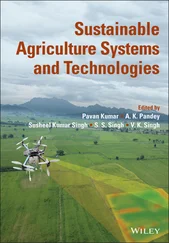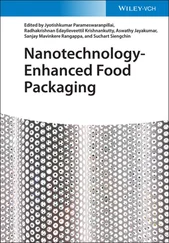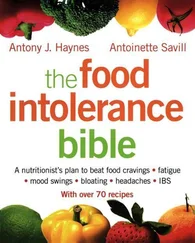All aforementioned methods are generally time‐, energy‐, reactant‐, and cost‐consuming batch type processes. Therefore, alternative methods are emerging, among them, extrusion‐hydro‐extraction (EHE) processes. Extrusion is widely used in the food industry and it offers many advantages, such as ease of operation, continuous production, high yield, and little waste. Using this method, Huang et al. [54] developed a novel EHE process for collagen extraction from tilapia fish scale, obtaining extruded scale samples with two to three times higher protein extraction yield than that of non‐extruded scale samples.
With regard to fish gelatin extraction, this protein is obtained through the hydrolysis of collagen. Many studies in the literature have reported different protocols for the obtainment of fish gelatin. The extraction protocols typically include the use of acid or alkaline chemicals as pretreatments. In this way, two types of gelatins can be differentiated: type A gelatin, derived from collagen by acid pretreatment (most fish gelatins are within this group); and type B gelatin, as a result of an alkaline pretreatment of collagen [55]. After pretreatments, gelatin is extracted using relative high temperature (45–50 °C) [56]. Compared with collagen extraction conditions, gelatin extraction temperatures are higher, since the protein chains need a stronger modification to become gelatin.
2.2.2 Preparation and Characterization of Fish Gelatin Films and Coatings
In order to prepare fish gelatin coatings, solutions can be applied onto food surfaces using different techniques, such as dipping, spraying, brushing, or panning [57], dipping and spraying being the most employed on fish, dairy products, or minimally‐processed fruit and vegetables. Abdelhedi et al. [58] evaluated the quality of fresh fish fillet samples immersed into different gelatin solutions. Indeed, samples dipped into black barred halfbeak ( Hemiramphus far ) gelatin solution were more efficient than samples coated with commercial bovine gelatin, and the effect was improved by the addition of its hydrolysate.
Considering gelatin has excellent film‐forming capacity, fish gelatin films are often prepared via solution casting for food packaging applications [59]. The process starts with dissolving gelatin along with additives, such as plasticizers or active compounds, in a suitable solvent, usually water or water–alcohol solutions. Heating and/or pH changes alter solution conditions, which affect the final properties of the film. Then, the solution is cast and, finally, solvent evaporation takes place when solutions are subjected to drying processes, leading to film formation [60]. Solution casting is widely used at laboratory scale owing to its simplicity [61, 62]. However, dry methods, such as compression molding [63] and extrusion [64], have also been used [65]. These methods are larger production techniques, faster, and more appropriate for industrial scale production since the pre‐existing technology used in the plastic industry can be used for gelatin film production.
In order to assess the suitability of films for food packaging, their properties must be evaluated. The mechanical behavior of films is an important issue, since films intended for food packaging require both resistance and flexibility to facilitate handling and to avoid breaking during packaging, transport, and storage stages [66]. Thus, plasticizers are commonly added to reduce hydrogen bonding and increase the molecular spacing between protein chains [67]. Due to its small size and hydrophilic nature, glycerol is a compatible plasticizer with fish gelatin and it has been widely used for gelatins [68–70]. However, the incorporation of more hydrophobic additives, such as fatty acids, may increase water resistance of fish gelatin films [71]. Physical, chemical, and enzymatic cross‐linking have also been explored to reduce water sensitivity of gelatin [65]. In particular, the addition of glucose to promote the chemical cross‐linking with amino groups of gelatin, known as Maillard reaction, reduces water solubility and increases water contact angle of fish gelatin films [72]. Furthermore, barrier properties against UV light are improved with Maillard reaction, even if fish gelatin shows high absorption of UV light in the range of 200–300 nm due to the presence of peptide and aromatic amino acid residues [73]. In addition to UV light barrier properties, fish gelatin can provide materials with good oxygen barrier properties, preventing food oxidation and extending food shelf life [74].
In terms of optical properties, film and coating appearance (color, transparency, and gloss) is directly related to consumer acceptability. Films and coatings based on fish gelatin are usually transparent and colorless [75]. Nevertheless, the incorporation of additives into the formulations to improve functional properties can affect the film transparency [76]. For instance, the presence of zinc oxide leads to a whitening effect [77]. Also cross‐linking reactions, such as Maillard reaction, produce a browning effect [78]. Regarding gloss, this property is related to the surface morphology [79]. Fish gelatin films showed lower gloss values when cross‐linked with citric acid, indicating the formation of a rougher surface as a consequence of the cross‐linking reaction [80]. It is worth noting that rougher surfaces provide more convenient properties to print the film for commercial purposes.
In addition to film characterization, other issues, such as contamination of food by migration of additives, are relevant matters due to potential health‐related risks [81]. Thus, even if fish gelatin is classified as Generally Recognized As Safe (GRAS) polymer by the Food and Drug Administration (FDA) center for food safety and nutrition, fish gelatin‐based materials intended for the packaging of foodstuffs must be approved after assessing the absence of toxic effects to the consumer and organoleptic changes to the food. Furthermore, the assessment of food quality can give detailed information of film and coating suitability. For instance, one of the most widely used means for the evaluation of fish quality, total volatile bases nitrogen (TVBN), is the key index of fish freshness [82, 83].
2.2.3 Food Shelf Life Extension Using Fish Gelatin Films and Coatings
Fish gelatin films and coatings can be employed to improve food quality and extend food shelf life. In recent years, different strategies have been used for this purpose. Cross‐linking usually enhances film barrier properties, increasing water, light, and chemical resistance [84]. In this regard, Etxabide et al. [85] employed a commercial cod fish gelatin, using lactose as a cross‐linker, and Taghizadeh et al. [86] incorporated riboflavin into fish gelatin film forming solutions to carry out a photosensitizer‐induced cross‐linking. Both studies showed improved light barrier properties, which highlight the potential of these films to prevent food oxidation caused by light, contributing to extend food shelf life.
Active packaging, antioxidant and/or antimicrobial packaging, is a strategy to extend food shelf life. In the last few years, gelatin of diverse aquatic fish species has been employed on active films and coatings, in which different additives were used as antioxidant and antimicrobial agents. Some of these works are outlined in Table 2.1. Adilah et al. [88] incorporated mango peel extract into fish gelatin film forming solutions, obtaining a material with excellent free radical scavenging activity due to the high presence of polyphenols, carotenoids, phytochemicals, enzymes, vitamin C, and vitamin E on mango peels. It is worth mentioning that mango skins contribute about 7–24% from the whole fruit weight, and so, using this by‐product will help in reducing waste. Aloe vera was also used as an antioxidant agent with fish gelatin, obtaining films that exhibited antioxidant properties dependent on A. vera concentration [98]. Thereby, control and 9% A. vera films showed 65.78% and 74.76% 1,1-diphenyl-2-picrylhydrazyl (DPPH) radical as well as 32.59% and 65.24% 2,2′-azino-bis-3-ethylbenzthiazoline-6-sulphonic acid (ABTS) radical scavenging activity values, respectively. Similarly, epigallocatechin gallate, one of the major flavanols obtained from tea extract, was added into tilapia skin gelatin film forming solutions in order to prepare active films [91]. Apart from providing antioxidant activity, epigallocatechin gallate enhanced the UV light barrier properties of films, contributing significantly to the food shelf life extension. Liang et al. [94] employed a commonly used traditional Chinese medicine for the extraction of esculine, a natural antioxidant agent, which was then incorporated into sturgeon skin gelatin film forming solutions to prepare films intended to be used as food packaging materials for long‐term preservation. Moreover, films containing this antioxidant formed non‐covalent cross‐linkages between the hydroxyl group of esculine and amino acid residues of gelatin that enhanced chemical, physical, and mechanical properties.
Читать дальше
